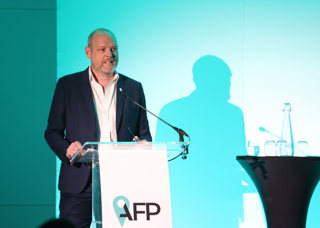By Martin Evans, board member of the Association of Fleet Professionals (AFP)
It’s no secret that electric van adoption is proving to be something of an operational conundrum for many fleets, with several known to have slowed or even temporarily shelved their plans for electrification because they are encountering a range of tricky-to-solve problems.
The key issues – and again, this is no surprise – are payload, range and charging availability. Businesses that were hoping to largely swap diesel panel vans for electric equivalents are finding that they are hitting difficulties in some or all these areas.
As part of this, the Association of Fleet Professionals (AFP) recently issued a plea for more accurate electric van range figures to be made available so that buyers can make better informed decisions.
Some operators have been making purchases based on the official WLTP statistics and then finding they are achieving nothing like those numbers in actual use.
This is not just a frustrating situation but potentially an expensive mistake, with the vans sometimes simply unable to fulfil the roles for which they have been bought.
It all creates quite a perturbing picture for van electrification. However, fleets are showing their habitual resourcefulness by starting to create their own solutions.
It’s becoming increasingly common to trial electric vans in a manner designed to recreate the conditions in which they will potentially be used - on the same roads, with the same payload and the same level of charge – to see how they cope in the real world.
These kinds of setups provide vital information about the likely range of vehicles, help identify locations for charging, and determine the levels of load that can practically be carried, helping circumvent the possibility of big vehicle orders which might not ultimately be fit for purpose.
Of course, having examined the results of these exercises, it isn’t just a case of rejecting a model of electric van if it doesn’t deliver the same flexibility in use as a diesel alternative, but working out whether operational changes can be carried out that would make the electrification process practicable. Again here, fleets are innovating.
If you have use cases where vans almost never cover more than 80 miles in a day with a light load and overnight charging is available, it is likely that few compromises are required.
Where greater flexibility is needed, operators are working to come up with other answers.
Some are simple and obvious, such as meeting range needs by aligning work breaks with charging needs, but others are more sophisticated.
Shared charging is an example of something that could have an impact, giving other businesses access to your charger infrastructure on a reciprocal basis.
This is very much a question of finding the right partners but is already showing definite potential.
Ultimately, it is probable that fleets are going to have to electrify virtually all their use cases over the next decade and while there are key elements that are largely out of their hands – such as public infrastructure growth and advances in battery technology – operators are ultimately going to have to find ways of making electric vans work for them.
These practical exercises and solutions represent valuable progress towards that objective and show the ingenuity of fleets in action.
























Login to comment
Comments
No comments have been made yet.